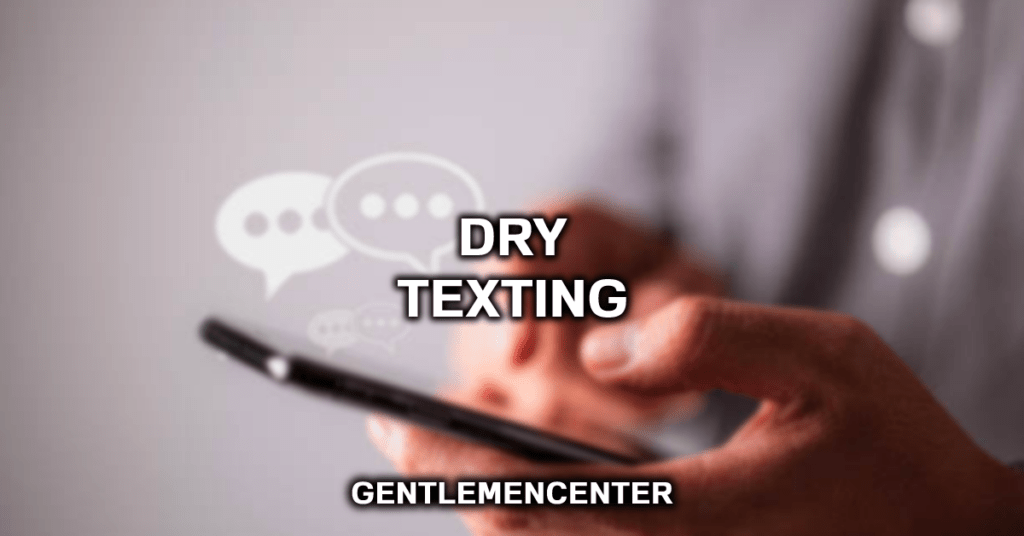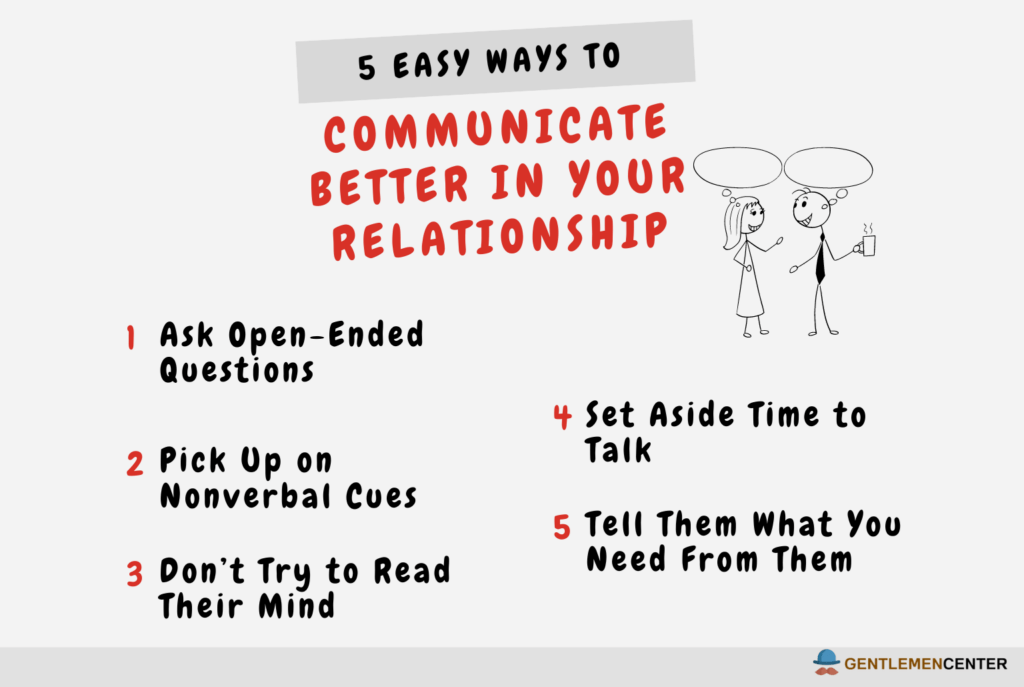In today’s world of instant communication, texting has become a primary mode of interaction for many. However, not all text conversations are created equal. Some are lively, engaging, and filled with humor, while others are quite the opposite.
Dry texting refers to those dull, monotonous, and unengaging exchanges that can leave both parties feeling frustrated or disinterested. This blog post will delve into the phenomenon of dry texting, exploring its causes, effects, and how to overcome it in order to create more vibrant and meaningful connections through the digital medium.
Read on to learn more about this common communication challenge.

What Is Dry Texting?
Dry texting is a term used to describe text message exchanges that lack emotion, enthusiasm, and overall engagement. These conversations typically consist of one-word responses or brief, unimaginative phrases that contribute little to the interaction.
Dry texting often results in stilted, uninteresting communication that can leave both parties feeling unfulfilled, bored, or even frustrated. There are many reasons why someone may engage in dry texting.
It could be due to their communication style, lack of interest in the conversation, or they might be preoccupied with other matters at the time. It is also possible that the person is simply not skilled in expressing themselves through text or may feel overwhelmed by the demands of maintaining an engaging conversation.

Dry texting can become a problem when it negatively impacts the quality of communication between two individuals. For instance, it may lead to misunderstandings, misinterpretations, or even harm the connection between the individuals involved.
In some cases, one person may feel ignored or unimportant because their attempts to engage in meaningful conversation are met with short, disinterested responses. In other cases, dry texting may create a barrier to developing a deeper understanding of one another, as neither party is able to effectively convey their thoughts, emotions, or experiences.
What Does Dry Texting Look Like?
Dry texting can manifest in several ways, and identifying it can help you understand the quality of your text-based conversations. Some common characteristics of dry texting include:
1. Short responses
One-word answers, such as “yes,” “no,” or “maybe,” are hallmarks of dry texting. While brevity can be useful in some situations, consistently receiving short responses can make it difficult to maintain a meaningful conversation.
2. Lack of emotion
Dry texts often lack emotional depth or expression. You might notice an absence of emojis, exclamation points, or other forms of digital body language that typically convey emotions or enthusiasm.
3. Unimaginative language
Dry texting may involve responses that are repetitive, clichéd, or lacking in creativity. This can make the conversation feel stagnant and uninteresting.
4. No questions or engagement

A dry texter may not ask questions or attempt to further the conversation. Instead, they may only respond when prompted, making it challenging for the other person to keep the conversation going.
5. Delays in responding
While not always a sign of dry texting, long delays between responses can contribute to a sense of disconnection and disinterest in the conversation.
Why Does Someone Dry Text?
There are numerous reasons someone might engage in dry texting. Some possible explanations include:
1. Communication style
Some individuals are naturally more reserved or introverted and may struggle to express themselves through text messages. This can result in dry texting as they may not know how to effectively convey their thoughts or emotions.
2. Lack of interest
If a person is not genuinely interested in the conversation, they may resort to dry texting as a way to minimize their involvement. This could be due to the subject matter, the person they are texting with, or simply because they are not in the mood for an engaging conversation at the moment.
3. Distraction or preoccupation
Someone who is multitasking or preoccupied with other matters may engage in dry texting as they cannot fully focus on the conversation. In these cases, their responses may be short and unengaging because they are not dedicating their full attention to the exchange.

4. Insecurity or social anxiety
Individuals who are insecure or struggle with social anxiety may find it difficult to engage in meaningful conversations, even through text. They may worry about saying the wrong thing or being judged, leading them to resort to dry texting as a means of self-preservation.
5. Fatigue or stress
When someone is feeling tired, overwhelmed, or stressed, they may lack the energy or mental capacity to engage in a stimulating conversation. As a result, they might resort to dry texting as a way of keeping the interaction going without expending too much effort.
6. Relationship dynamics
In some cases, dry texting may be indicative of an imbalance or issue within a relationship. One person might be disengaging from the conversation as a passive-aggressive response or as a way of signaling their dissatisfaction with the other person.
How Do You Know If He/She Is Uninterested Or Just A Dry Texter?
Determining whether someone is genuinely uninterested or simply a dry texter can be challenging. However, there are some clues that can help you make this distinction:
Consistency
If the person consistently engages in dry texting across multiple conversations and various topics, they may be a dry texter. However, if their responses only become dry or disengaged during specific conversations or situations, it may indicate a lack of interest in that particular subject matter.
Engagement in other forms of communication
Pay attention to how the individual communicates in other settings, such as in person or over the phone. If they are more animated and engaging in other contexts, they might be dry texter who struggles to convey their personality or emotions through text.
Response to attempts to deepen the conversation
If you make efforts to engage the person in a more meaningful conversation and they continue to respond with dry, uninterested messages, it could be a sign that they are not genuinely invested in the interaction.
Initiating conversations
An uninterested person is less likely to initiate conversations or reach out to you. If the individual regularly starts conversations but still engages in dry texting, they may simply be a dry texter.
How To Stop Getting Dry Texts
If you find yourself consistently receiving dry texts, consider implementing some of the following strategies to encourage more engaging conversations:

1. Choose interesting topics
Select conversation topics that are likely to pique the interest of the other person. By discussing something they are passionate about or genuinely curious about, you might inspire more enthusiastic responses.
2. Use open-ended questions
Rather than asking questions that can be answered with a simple “yes” or “no,” try posing open-ended questions that require more thought and elaboration. This can encourage the other person to share their thoughts and opinions more thoroughly.
3. Use emojis and other expressive elements
By incorporating emojis, GIFs, or other expressive elements in your texts, you can model the kind of emotional expression you would like to see from the other person. This can help set the tone for a more engaging conversation.
4. Be patient and understanding
Recognize that some people may struggle with text-based communication and may need time to become more comfortable with this mode of interaction. Be patient and understanding, and try to encourage more engaging conversations without pressuring the other person.
How To Deal With Dry Texts In A Relationship
Dry texting can be particularly frustrating when it occurs within a romantic relationship. To address this issue, consider the following approaches:
Communicate your feelings
Openly discuss your concerns about dry texting with your partner. Explain how it makes you feel and ask if there are any underlying reasons for their communication style.
Suggest alternative forms of communication
If your partner struggles with text-based communication, suggest alternative methods, such as phone calls or video chats. This may help them feel more comfortable expressing themselves and facilitate more engaging conversations.
Establish boundaries and expectations
Set clear expectations regarding communication within the relationship. This may involve discussing the frequency of text exchanges, the level of engagement you both expect, or even establishing designated “text-free” times when you can focus on connecting in person or through other methods.
Practice active listening
When your partner does share their thoughts and feelings, make sure to practice active listening. Respond with empathy and understanding, and avoid interrupting or jumping to conclusions. This can create a safe space for your partner to express themselves and may encourage them to be more open and engaging in their text communication.
Be patient and supportive
Remember that changing one’s communication style can take time and effort. Be patient with your partner as they work to improve their texting habits and offer support and encouragement along the way offer support and encouragement along the way.

How To Avoid Dry Texts With Someone
To minimize the occurrence of dry texts in your conversations, try adopting the following strategies:
Lead by example
Make an effort to be engaging, expressive, and thoughtful in your own text messages. This sets the tone for the conversation and can inspire the other person to reciprocate with similarly engaging responses.
Personalize your messages
Show genuine interest in the other person by asking about their day, their feelings, or their experiences. This can help create a more meaningful connection and encourage them to share more openly.
Be mindful of timing
Consider when you’re initiating or responding to text conversations. If you or the other person are likely to be preoccupied, tired, or otherwise unable to fully engage in the conversation, it may be best to postpone the exchange until a more suitable time.
Offer positive reinforcement
When the other person sends a particularly engaging or thoughtful message, be sure to acknowledge and express appreciation for their effort. This positive reinforcement can motivate them to continue engaging in more meaningful conversations.
Develop a rapport
As you get to know the other person better, try to identify shared interests, experiences, or values that can serve as a foundation for more engaging conversations. By focusing on common ground, you can help foster a stronger connection and facilitate more fulfilling text exchanges.